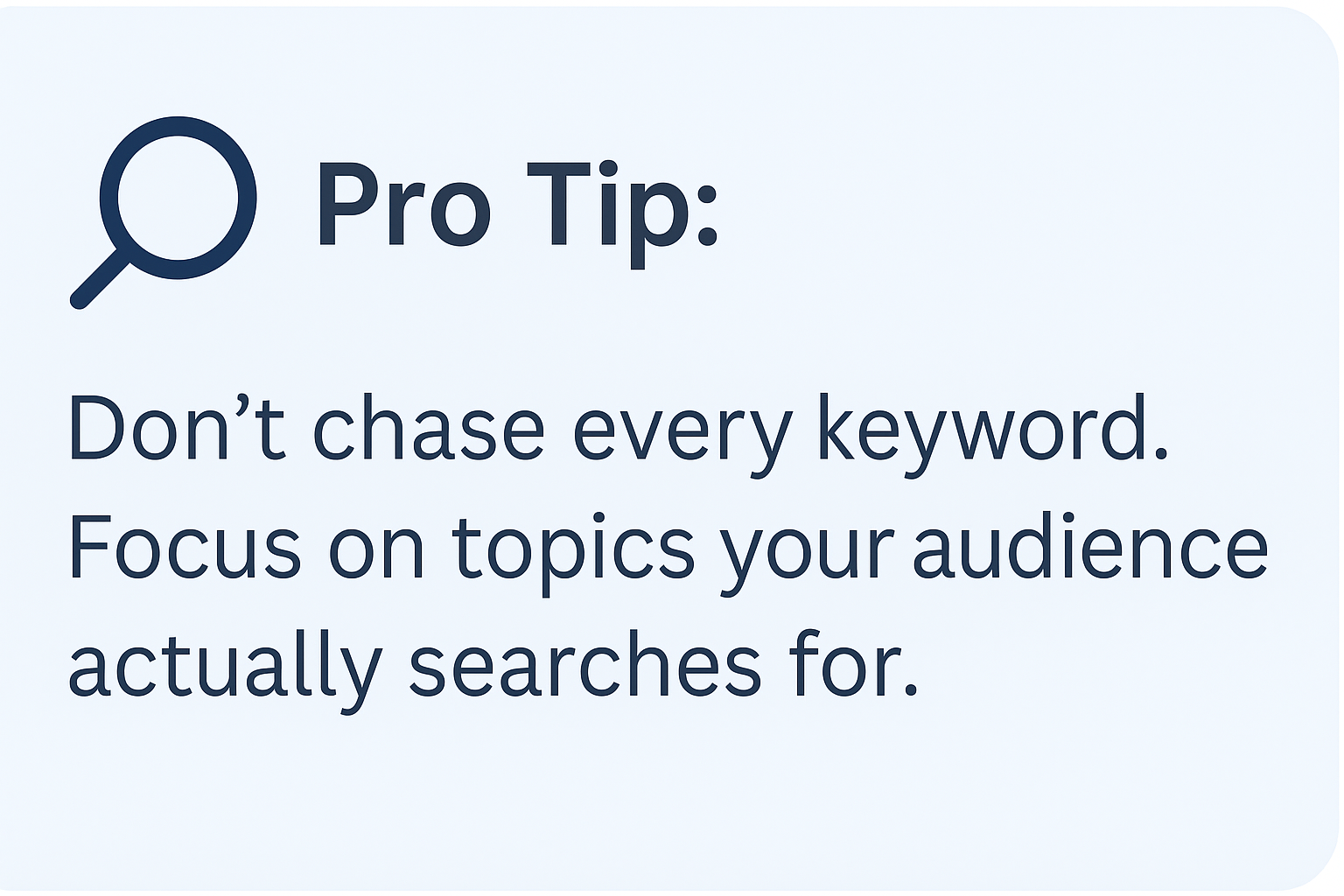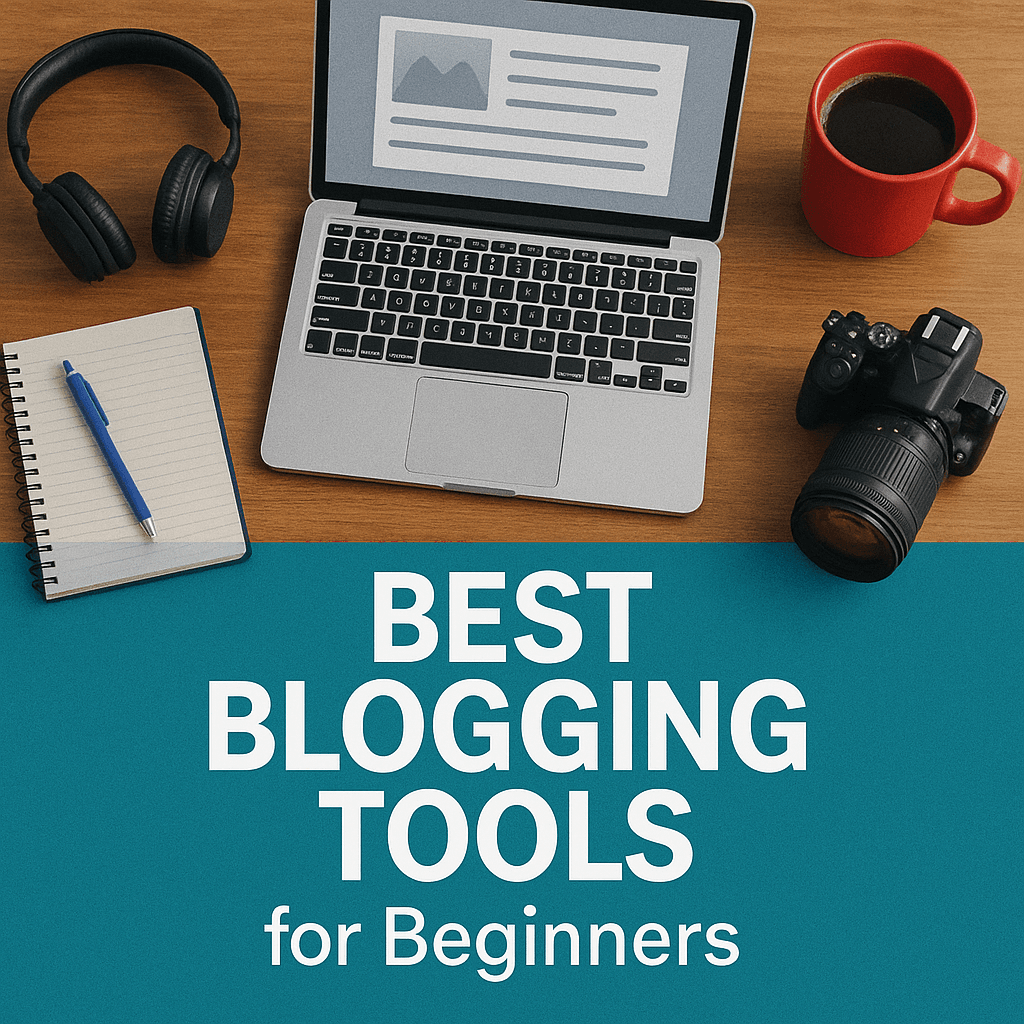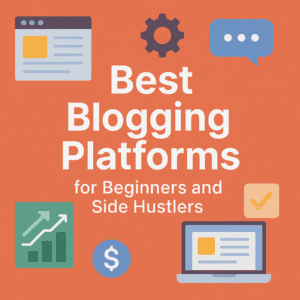Last Updated on November 12, 2025 by Team Digital Web Verse
Table of Contents
When you’re just starting a blog, it’s super easy to get trapped in tool overload. There’s a tool for everything — writing, editing, SEO, marketing, planning, designing… and before you know it, you’re spending more time signing up for apps than actually writing posts.
But the truth is: you don’t need all the tools. You just need the right ones — the kind that simplify your work and help you grow without burning out.
These are the best blogging tools I’ve either used myself or recommended to others who wanted to start smart. Some are free, some are paid, and a few fall somewhere in between. I’ll break them down by category and give you a behind-the-scenes look at how each one helps (and why it’s worth your time). Using the right blogging tools can make a massive difference, especially if you’re short on time, budget, or patience.
Why Blogging Tools Matter (And Why You Should Care Early On)
Here’s the part most beginner bloggers underestimate: Your blog is not just your writing.
It’s your design, structure, visibility, speed, and ability to turn readers into fans — all working behind the scenes. And that’s where tools come in.
When I first started, I had no idea which blogging tools I actually needed vs. what just looked cool on YouTube. Imagine trying to cook without a stove, or trying to paint with a toothbrush. Technically possible? Maybe. But fun, sustainable, or even halfway decent? Not likely.
Good blogging tools do a few things:
- Save you time on repetitive stuff
- Help your content actually reach people
- Let you focus on the fun part (writing and connecting)
If you’ve ever stared at a blank WordPress dashboard thinking, “Where do I even start?”, tools can guide you through the fog.
🖥️ Domain & Hosting: Your Blog’s Home Base
Before we even talk design or writing, you need a place to put your blog, like your name on the internet, and a home where your blog will live.
That’s your domain (e.g., yourawesomeblog.com) and your hosting (where all your blog files are stored).
What to Look for in a Good Host
When I first started, I went with a random cheap host. Big mistake. My site was slow, kept crashing, and support was a nightmare. Lesson learned: don’t cheap out too hard here. You don’t need the fanciest package, but you do want a host that won’t make you pull your hair out at 2 a.m.
Choosing your hosting wisely is one of the most underrated blogging tools decisions you’ll make early on.
Recommended Hosting Tools
- 🟢 HostGator – Solid, beginner-friendly, and they include a free domain if you use the promo code GATOR65 (plus up to 65% off). Their support chat has saved my life more than once.
- 🟡 Namecheap – A great option for buying your domain separately, especially if you’re into privacy protection and want to keep things simple. Their prices are clear, and they rarely do sneaky upsells. Use code NEWCOM649 to get a .COM for just $6.49.
💡 Pro Tip: If you register your domain with Namecheap and host with someone else (like HostGator), just make sure to update the DNS settings. It’s a one-time setup, and tutorials are everywhere.
🔗 How to Start a Blog (Step-by-Step)
🛠️ Blogging Platform (CMS): The Engine Behind the Scenes
Okay, now that your blog has a “house,” it’s time to decide what kind of furniture and tools you’re putting inside — that’s your CMS (Content Management System). It’s where you’ll write posts, manage content, and customize how everything looks and works.
I’ve tested a bunch of the top platforms for blogging, but WordPress.org remains my favorite by far — and it’s what most serious bloggers use.
Let me be clear: I’m talking about WordPress.org, not WordPress.com.
The .org version is self-hosted, meaning you get full control over your site, plugins, themes, monetization — everything.
Why WordPress.org Is the Best Platform
- Totally free to use (you just need hosting)
- Tons of free and paid themes/plugins
- Scales with you as your blog grows
- Works with basically every other tool in this post
🔗 Full Guide: Setting Up Your WordPress Blog
You could use Wix or Squarespace, but most people end up migrating to WordPress later when they hit a wall. If you’re serious about blogging long-term — start with WordPress and skip the headache. Your CMS is the heart of your blog — and WordPress integrates with nearly all the best blogging tools on the market.
👉 If you’re experimenting with plugins or roles and get locked out, this fix can help restore WordPress admin access.
🎨 Themes & Blog Design Tools: Making It Look Like You Know What You’re Doing
Now comes the fun part: making your blog actually look good.
Your theme controls the layout, fonts, responsiveness (how it looks on mobile), and how professional your blog feels overall. And yes — readers do judge your site by its cover. If your blog loads slowly, looks cluttered, or isn’t mobile-friendly, people bounce.
Design might feel secondary, but trust me — using the right blogging tools to improve your layout, speed, and branding can seriously boost engagement.
When I first installed WordPress, I spent hours testing random free themes… most of them looked awful or broke with every update. I eventually landed on a lightweight theme that was easy to customize — and I’ve never looked back.
Best Beginner-Friendly Themes
Here’s what I recommend:
- Astra – Super light, fast, and beginner-friendly. Even the free version gives you a bunch of layout options.
- Kadence – Another favorite of mine. It has a drag-and-drop header/footer builder and solid starter templates.
Tools for Creating Logos & Blog Visuals
- Envato Market – If you want something more unique or niche-specific (like travel, fashion, or food blogs), you’ll find premium themes here. Just check reviews and make sure the developer updates the theme regularly.
- Placeit by Envato – Perfect for blog logos, YouTube thumbnails, and mockups. I used this when I didn’t have the budget for a designer, and it worked surprisingly well.
💡 A fast theme can also help your SEO — Google loves speedy sites.
🔍 SEO Tools: Helping Google Actually Find Your Blog
So you’ve written a post. Maybe it’s brilliant. Maybe it’s the best piece of advice on the internet. But if Google doesn’t know it exists, guess what? No one’s going to see it.
This is where SEO-focused blogging tools like Rank Math or Ubersuggest can save you from publishing into the void.
What SEO Tools Help With
SEO (Search Engine Optimization) helps your blog show up when someone types a question into Google. It’s how people find you without you needing to spend hours promoting every post.
In the beginning, I thought SEO was all just keyword stuffing and backlink begging. But once I used the right tools, I realized it’s more about structure, clarity, and giving search engines the info they need to understand your content.
Top Free & Paid SEO Tools
- Rank Math – This is the SEO plugin I recommend to anyone using WordPress. It helps you add meta descriptions, optimize images, generate sitemaps, and more. The free version is already packed with features, and the Pro version adds even more juice once you’re ready.
- Ubersuggest – For keyword research without the overwhelm. It shows monthly search volume, competition level, and content ideas. You get a few free searches per day — more than enough when you’re starting out.
- SEMrush / Ahrefs – These are heavyweight tools with deep analytics, backlink tracking, competitor research, etc. I wouldn’t say you need these early on, but they’re worth looking into once you’re getting serious traffic or aiming to compete in a tough niche.

💬 Think of SEO tools as the GPS for your blog content. Without them, you’re just kinda… hoping people find you.
💡 Looking to grow your blog faster this season?
The biggest Black Friday deals of the year are live!
Save up to 80% on hosting, SEO tools, and WordPress themes — all the essentials to start your blog.
👉 Grab the Best Black Friday Deals → Best Black Friday & Cyber Monday Deals (2025)
⏳ Updated daily as deals go live.
✍️ Content Writing Tools: Making Writing Less of a Struggle
Let’s be real — writing consistently is hard. Some days you’ve got all the ideas in the world, and other days you just stare at a blinking cursor, wondering what life choices led you here.
Writer’s block is real. Thankfully, these blogging tools help me brainstorm faster and get to publishing quicker
Tools That Help You Write Faster
My go-to content helpers:
- Grammarly – Like spellcheck on steroids. It catches grammar slips, clunky phrases, and tone issues. The free version is honestly enough for most bloggers.
- ChatGPT / Jasper AI – Not to write your posts for you, but to help you brainstorm ideas, outline a post, or get past writer’s block. I’ll often ask for 5 headline variations or SEO-friendly subheadings — it’s a time saver.
- Google Docs – Still my favorite drafting space. Easy to access from any device, perfect for collaboration, and simple to copy into WordPress once ready.
- Notion – A bit more structured than Docs, ideal if you like organizing your content into databases, calendars, or checklists. I use Notion for planning and Google Docs for writing — best of both worlds.
✏️ Blogging isn’t about perfect grammar — it’s about clarity and connection. These tools just help polish things a little faster.
🔥 Related posts you’ll want to check out:
Tools are powerful — but only if you pair them with a smart strategy. Here are your next steps:
👉 Affiliate Marketing for Bloggers: A Beginner’s Guide
👉 How to Start a Blog: Step-by-Step Guide
👉 How to Build an Email List (2025)
📸 Graphics & Visual Tools: Make It Look Good Without a Designer
A blog without visuals is like a wall of text in a textbook. Nobody wants that.
Even the best writing can fall flat without good design and images to break things up.
But here’s the good news: you don’t need to be a designer. I’m not. I still use drag-and-drop tools to create everything — from social graphics to YouTube thumbnails to lead magnets.
My Favorite Free & Paid Design Tools
- Canva – I cannot recommend this enough. It’s free (with optional Pro), and lets you create blog banners, Pinterest pins, infographics, and more. I use this for almost every blog graphic.
- Designs.ai – Create logos, videos, mockups, and social media content with AI — perfect for bloggers and small biz owners.
👉Try Designs.ai – Use promo codeDS48AN20for 20% off (valid till Dec 31, 2025) - InVideo – If you want to repurpose blog posts into short videos, this tool makes it incredibly simple. Great for Instagram Reels, YouTube Shorts, or even turning a blog post into a narrated video.
- Unsplash / Pexels – Free stock photo sites with beautiful, non-cheesy images. Perfect for blog headers or background visuals.
You don’t need a $300 Adobe subscription to make your blog shine. These free (or freemium) blogging tools do the job well — especially when paired with a clean theme.
🎨 AI Design Deal for Bloggers!
Unlock 20% OFF Designs.ai — your all-in-one AI toolkit for logos, blog graphics, videos, and more.
🟢 Use code DS48AN20 at checkout
📆 Valid until Dec 31, 2025
📬 Email Marketing Tools: Build Your List From Day One
If I could go back and change one thing about how I started blogging, it would be this:
Start building an email list from day one.
Seriously. Social media traffic comes and goes. SEO takes time. But your email list? That’s yours. You can reach your readers anytime, promote new content, and even monetize through affiliate offers or products, without relying on algorithms.
Best Email Tools for Beginner Bloggers
These blogging tools for beginners are a game-changer if you want to grow a list without paying from day one:
- Kit (formerly ConvertKit) – This tool is designed for bloggers and creators. You can create opt-in forms, automation sequences, and segment your audience — all with a free plan up to 1,000 subscribers.
- MailerLite – Another strong, free option. Their interface is clean, and they’ve got decent automation tools. A solid choice if you’re not quite ready for Kit’s structure.
💌 Even if you just start with a single opt-in form and a basic welcome email, do it. You don’t need 50 different apps — just a core stack of blogging tools that help you stay consistent. You’ll thank yourself later.
📊Analytics & Tracking: Know What’s Working (And What’s Not)
Once your blog is up and running, the next step is figuring out what’s working.
Where is traffic coming from? Which blog posts are getting clicks? Are people bouncing or sticking around?
You don’t need to be a data nerd, but some basic tracking helps you grow with purpose.
Must-Have Tracking Tools for Bloggers
- Google Analytics – The industry standard. Tells you how many visitors you’re getting, where they’re coming from, and what they’re doing on your site.
- Google Search Console – Focused on SEO and search performance. You’ll see which keywords are bringing traffic, what pages are indexed, and if Google finds any issues with your site.
- MonsterInsights – A beginner-friendly plugin that pulls GA data into your WordPress dashboard in a way that’s not terrifying to look at.
Without tracking, your blogging tools are flying blind. These give you the data to improve what works
🔗 Follow our step-by-step guide to set up Google Analytics & Search Console
🧠 Productivity & Planning Tools: Keep Your Blogging Life Together
Blogging gets overwhelming fast — especially if you’re juggling it alongside a job, school, or family life (which most of us are).
That’s why you need some kind of system — even if it’s just a basic content calendar and a to-do list.
Tools to Stay Organized and Focused
- Trello – Perfect for visual planning. I use it to move blog post ideas through stages: Idea → Draft → Edit → Scheduled → Published.
- Notion – Great if you like databases, custom dashboards, and keeping everything in one place. I track blog post outlines, affiliate deals, and content calendars in here.
- Google Calendar – For actual publishing deadlines or reminders to update posts.
- Todoist – Super simple task manager. I use this for everyday things like “add images to blog post” or “renew domain.”
💡 Even if you’re not “a planner” by nature, having a few simple tools to stay organized keeps the blog momentum going.
Bonus Blogging Tools to Consider
As your blog grows, here are a few more tools worth checking out:
- Tailwind – Amazing for Pinterest automation. Helps schedule pins and keep a consistent visual content presence.
- NordVPN – If you ever work from public Wi-Fi (coffee shops, travel), a VPN keeps your site and logins safe from snoops. I use it anytime I’m researching international niches or logging into WordPress from shared networks.
How to Choose the Right Blogging Tools (Without Going Broke)
There are so many tools out there. Don’t let FOMO drive your choices.
Here’s how I recommend approaching your tech stack:
- Start with free or freemium. You can do a lot without spending anything.
- Upgrade when it makes sense. If a tool is saving you hours or helping you earn, it’s worth it.
- Stick to the essentials first. Hosting, WordPress, a good theme, and Canva will take you far.
And if something feels too complicated? Skip it for now. You can always revisit later when it fits your workflow better.
FAQs: Blogging Tools for Beginners
What tools do I need to start a blog on a budget?
Are paid blogging tools worth it for beginners?
Sometimes. Tools like Kit or Astra Pro can definitely make life easier. But don’t feel pressured — free tools today are way better than they used to be. Start with free. Upgrade when the free version feels limiting.
Can I start a blog without knowing tech stuff?
Absolutely. That’s kinda the point of using tools like these. Most are built for non-techy people, with tutorials everywhere. If you can use Facebook, you can use WordPress.
Final Thoughts: Choose Tools That Work For You
Here’s the deal — there’s no “perfect” tool stack. What works for me might not work exactly the same for you.
The key is to choose tools that make blogging easier, not harder.
You don’t need 25 plugins and 10 writing apps. You need 3-5 solid tools that help you show up, write consistently, and grow over time.
I wish someone handed me a list of actually useful blogging tools when I started. It would’ve saved me a ton of wasted time. These are the exact tools I wish I had when I started. Try them out, tweak your setup, and save yourself months of frustration.
And hey — some of the links above are affiliate links. That means if you click and make a purchase, I might earn a small commission (at no extra cost to you). It helps keep this blog running — and lets me keep sharing honest, practical content.
✅ Ready to Start?
Need help picking your theme, setting up hosting, or staying on track?
Grab our free Beginner Blogger Checklist — includes blog setup steps, SEO prep, monetization pointers, and more.
Or, if you’re ready to dive in:
👉 Compare Hosting Options Here →
👉 12 Best WordPress Themes for Bloggers: Free & Paid



